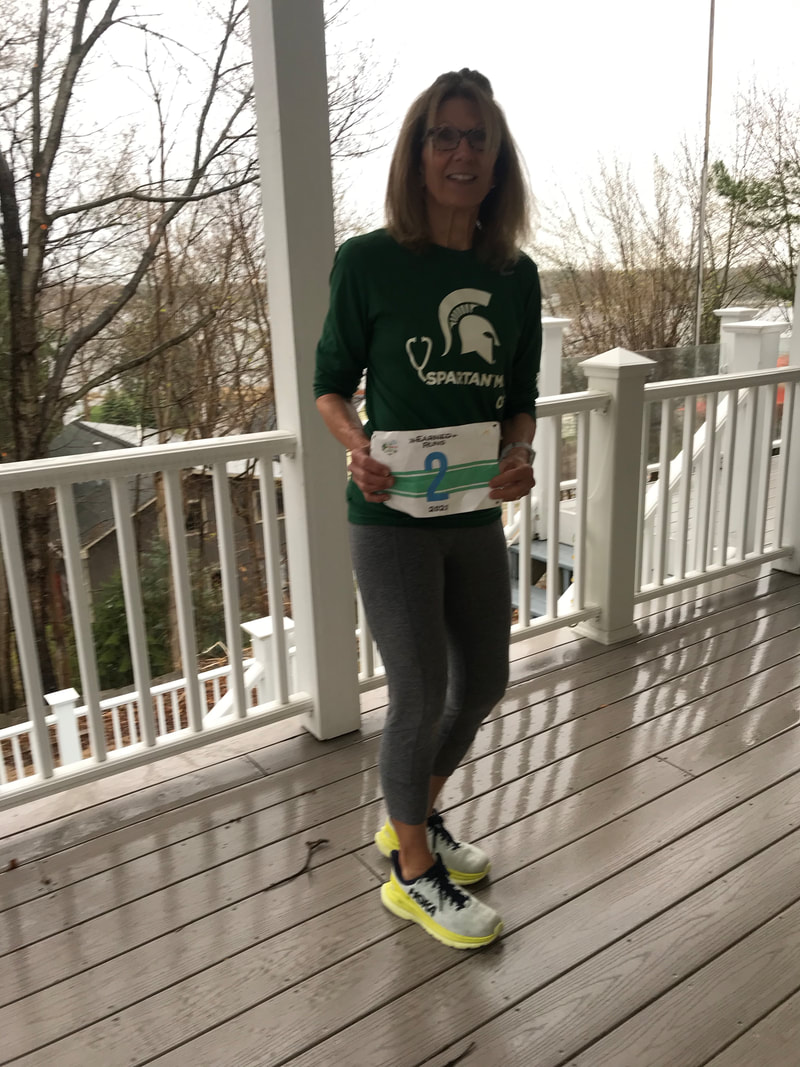BLOG
|
|
THE EARNED RUNS WEBPAGE, “BONE STRENGTH FOR ATHLETES” was established recently to organize information about this health topic on one place. Why might athletes be concerned with this body tissue?
IMMEDIATE RISK OF BONE INJURY With over-training it’s well known that endurance athletes risk all types of injury that can prevent participation in sport, including high stakes competitions. Elite marathoners have been forced to pull out of races due to bone injury. Shalane Flanagan left the field of the 2017 Boston Marathon because of a “back fracture”. Jordan Hasay decided not to compete in Boston in April 2018 because of a heel “stress reaction” detected by MRI. She dropped out of the 2018 Chicago Marathon later in October, because of a new fracture in the same foot. Common sites for stress fractures include the ankle and foot bones, the femoral neck, the and pelvic bones. Stress fractures of the sacrum, a pelvic bone, have sidelined top elites, famously Kara Goucher in 2014, and athlete and coach Mario Fraioli. Some may recognize the name, as Fraioli developed some of the training plans that Earned Runs has adapted for use. Elites are not alone in suffering bone stress fractures. Recreational athletes can incur this type of injury as well. General risk factors include: repetitive, high-impact exercise; significant increase in training volume or intensity; low bone density; “female athlete triad”, and poor nutrition. The first item on the list pretty much includes all endurance runners and high-impact sports lovers The introduction of a small retrospective scientific study published in early 2018 indicates, “Bone stress injuries occur in sport activities with the highest prevalence of injuries in track and field (10-31%)”. Within this group the authors say, “endurance athletes sustain significantly higher bone stress injuries than all other track and field athletes” with most (~78%) occurring in the lower extremity. The study sough to identify a way to predict which athletes might be at risk for long bone (fibula tibia, femoral shaft, and femoral neck) stress injury by examining the relationship between bone and body composition, which had not previously been explored, they claimed. The scientists developed and tested a model utilizing data collected from Caucasian male NCAA Division I athletes. The model took into consideration factors that have been associated with stress injury, like bone mass density and body composition measures (low body fat percentage, low muscle mass, and low body mass index), and total upper body mass. The authors felt that study results did not allow their prediction model to be put into practical use without further evaluation and in a large study. However, the aim and outcome of this research emphasizes that there is much to be learned about the potential relationship between bone composition and other factors that appear to increase or decrease stress fracture risk. Not just in long bones of the leg, but other sites. Not just in white, male, college endurance runners, but in competitive and recreational athletes of both genders, and in multiple age and racial/ethnic groups. IMPACT ON FUTURE BONE HEALTH We learned from the article featured in the blog post “SCIENCE FRIDAY: BONE HEALTH BASICS II” [“MECHANICAL BASIS OF BONE STRENGTH: INFLUENCE OF BOME MATERIAL, BONE STRUCTURE AND MUSCLE ACTION” by N.H. Hart, S. Nimphius, T. Rantalainen, et al] “Accrual of bone takes place most rapidly in the teenage years, culminating in the third decade of life to achieve peak bone mass.” After that peak point, bone mass is maintained or potentially lost. Its seems logical that athletes in the critical years of bone accrual (the teens and 20’s) would be helped immensely by taking steps to lessen the effects of specific training, dietary, and other life practices which are identified as being detrimental to the building of bone. Beyond this period, harmful practices that contribute to bone loss can be avoided to preserve bone health into future decades, with the purpose of preventing stress fractures and the medical conditions of osteopenia/osteoporosis and, ultimately, frailty. Key to building and preserving bone is learning what is currently known about these processes. It’s clear there is much for science to discover, including the best methods of measuring and models for predicting . The reason why athletes should be concerned about bone health is that their immediate and distant future participation and enjoyment of sport, and general good health as well, may depend upon knowing and then acting upon such knowledge. And perhaps asking for more high-quality research that broadly studies all of us. RUN & MOVE HAPPY! https://running.competitor.com/2018/04/news/pro-dathan-ritzenhein-no-longer-competing-at-boston_170180 https://www.flotrack.org/articles/5061579-shalane-flanagan-withdraws-from-boston-marathon-due-to-back-fracture https://www.flotrack.org/articles/6250225-jordan-hasay-opens-up-after-withdrawing-from-second-marathon-in-5-months https://www.emedicinehealth.com/stress_fracture/article_em.htm https://www.athletebiz.us/blog/sacral-stress-fractures/ https://www.sportsmedtoday.com/stress-fracture-va-60.htm http://www.sjosm.org/article.asp?issn=1319-6308;year=2017;volume=17;issue=1;spage=1;epage=6;aulast=Vasiliadis https://www.pubfacts.com/detail/30169347/A-Simplified-Prediction-Model-for-Lower-Extremity-Long-Bone-Stress-Injuries-in-Male-Endurance-Runnin science_friday_bone_health_basics_partII
0 Comments
Your comment will be posted after it is approved.
Leave a Reply. |
BRIDGE TO PHYSICAL SELF
Running, walking, and fitness activities enable us to experience our physical selves in a world mostly accessed through use of fingers on a mobile device. AuthorEARNED RUNS is edited and authored by me, runner and founder. In 1978 I began participating in 10K road races before 5Ks were common. I've been a dietitian, practiced and taught clinical pathology, and been involved with research that utilized pathology. I am fascinated with understanding the origins of disease as well as health and longevity. Archives
November 2023
CategoriesNew! Search Box
Earned Runs is now searchable! Check it out...
|


 RSS Feed
RSS Feed